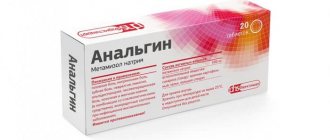Flemoxin: description of the drug, rules of administration during lactation
Antibacterial drugs are widely used in modern medicine. Antibiotics are effective in combating severe infectious diseases caused by fungi and pathogenic bacteria. But they destroy not only pathogenic, but also beneficial microorganisms, disrupting the bacterial flora.
Flemoxin Solutab is a universal antimicrobial drug with a wide spectrum of activity, which is prescribed for infectious and inflammatory diseases. This article will discuss the description of the antibacterial drug, the features of administration during lactation and pregnancy.
Description of the antibiotic
Flemoxin Solutab is a semi-synthetic antibiotic from the penicillin group, manufactured by the pharmaceutical company Astellas Pharma. This is a medicine with a bactericidal effect that is active against gram-positive and gram-negative microorganisms. The active ingredient is amoxicillin.
The components of the drug inhibit protein synthesis of the bacterial cell wall. As a result, the reproduction and growth of harmful microorganisms stops.
The medication is quickly absorbed in the body and is resistant to gastric juice. Absorbed easily regardless of food intake. The peak concentration of amoxicillin in the blood occurs after 2 hours. The drug is excreted by the kidneys (60%) and liver (15%). If the kidneys are functioning normally, the half-life is 1.5 hours. The drug does not inhibit the natural bacterial flora of the intestine. This means that the risk of developing dysbiosis is minimal. Therefore, the drug is used to treat children, during pregnancy and during breastfeeding.
pharmachologic effect
Solutab has a wide spectrum of action; the drug is active against a large number of opportunistic and pathogenic microorganisms. An antimicrobial drug has a bactericidal effect.
The antibacterial drug is active against staphylococci, streptococci, gonococci, meningococci, Escherichia coli, Shigella, Salmonella, chlamydia, Helicobacter pylori bacteria, etc. The drug is part of the penicillin group, and therefore, like all representatives of this class, cannot resist β-lactamases (enzymes that destroy penicillins).
The drug inhibits the growth and reproduction of pathogens and stops the development of infection. The components penetrate inside the cells, protecting the body from the harmful effects of pathogenic bacteria. An improvement in the patient's condition is observed 2–3 days after the start of treatment.
The drug does not overload the inner lining of the stomach, unlike antibiotics that are available in capsule form. Chew or dissolve the tablet in water before and after meals. The antimicrobial drug can be taken by children, as well as during pregnancy and breastfeeding.
Composition and dosage form
Soluble tablets consist of the following components:
- amoxicillin trihydrate;
- microscopic cellulose;
- desparged cellulose;
- vanillin;
- crospovidone;
- food additives with lemon and tangerine flavors;
- magnesium salt of stearic acid;
- saccharinate
The drug is available in the form of dispersible (soluble) tablets. Tablet weight 0.13 g, each package contains 5 or 7 pieces. There are 2 or 4 packs in a pack, there are also instructions for use.
Tablets weighing 0.25, 0.5 or 1 g are packaged in packages of 5 pieces each. There are 4 packs in a pack along with instructions.
These are oval-shaped tablets that have a white or yellowish tint. Each tablet is divided by a stripe in the middle, there are digital markings (23, 232, 234, 236) and the Astellas Pharma logo.
Tablets are used in modern medicine for infectious diseases of a bacterial nature.
Indications
The drug is concentrated in high doses in the respiratory tract, so it is often used to treat the respiratory and ENT organs. Main indications: bronchitis, pneumonia, tracheitis, laryngitis, pharyngitis, etc.
The medication is used for nephritis and genitourinary infections. And that’s all, because the antibacterial drug is observed in high concentrations in the kidneys, as it is excreted through this organ. In case of renal failure, the medication is not recommended.
About 20% of the drug is excreted through the liver, and therefore it is concentrated in this organ. Cholecystitis and cholangitis are treated with antibiotics.
An antibacterial drug is used to treat sexually transmitted infections. Respiratory and urinary tract infections can be treated empirically, based only on symptoms and not test results. Infectious lesions of the biliary and reproductive systems are treated only after laboratory tests. This is necessary to find out how sensitive the bacteria are to Flemoxin. The drug is also used to treat gonorrhea and ulcers.
Directions for use and dosage
Flemoxin Solutab is taken orally before or after meals. The tablet is dissolved or dissolved in liquid (purified water or syrup).
Treatment regimen:
- children 1–3 years old – 0.25 g twice a day or 0.13 three times a day;
- children 4–10 years old – 0.25 g three times a day or 0.38 g twice a day;
- children over 11 years old and adults - from 0.5 to 0.7 g twice a day.
Relapses, chronic diseases or severe infections are reasons to prescribe 1 g of medication three times a day, but this decision is made only by the attending physician.
If the patient has gonorrhea, the dosage is as follows - 3 g of the drug once a day. If the patient has renal failure, the dose of the drug is reduced. If you need to take larger doses of the drug, use 1000 mg tablets. Take this medicine with caution if you are pregnant or breastfeeding. The dosage is prescribed only by the attending physician!
Contraindications
An antibiotic is not prescribed in case of hypersensitivity to the components of the drug.
Contraindications for use:
- lymphocytic leukemia;
- Epstein-Barr viral infection;
- functional kidney disorder;
- severe infections of the digestive tract with the following symptoms: vomiting, diarrhea, dehydration;
- ulcerative processes in the intestines.
vskormi.ru
Purpose of the drug
Flemoklav Solutab is prescribed for diseases that are caused by bacteria sensitive to it:
- Diseases of the upper airways and ENT organs (inflammation of the ear, pharynx, tonsils, etc.).
- Inflammation of the lower airways.
- Infectious diseases of the skin and soft tissues.
- Diseases of the genitourinary system (inflammation of the bladder, kidneys).
In addition, the drug is used for infections of bones, joints, and gynecological diseases.
Use of Flemoxin Solutab during pregnancy and breastfeeding
Flemoxin Solutab is an antibiotic of the penicillin group, partially synthetic. It has a widespread bactericidal effect, effective against gram-positive and negative pathogens. Destroys membranes and inhibits the synthesis of the following microorganisms:
- Pneumococci
- Clostridia
- Streptococci
- Anaerobic gonococci
- Moraxella
- Meningococcal bacteria
- Listeria
- Helicobacter pylori
- Staphylococcus
- Haemophilus influenzae.
Flemoxin is often prescribed to combat intestinal infections, although the effectiveness is lower: shigella, enterococcus, E. coli, salmonella, Protea mirabilis, cholera virus. Not active against microorganisms that produce beta-lactamase: pseudomonas, ind-positive Proteus, serration, enterobacter.
The main advantage of the drug is that it is suitable for treatment during pregnancy and is used during lactation. The proven safety of the tablets allows their use in the second and third trimester. In the initial stages, therapy is acceptable for severe diseases.
Compatibility of Flemoxin with pregnancy and breastfeeding
After conceiving a child, a woman’s immunity decreases sharply, which can cause an exacerbation of certain diseases. The question of prescribing any medications is decided only by the doctor, based on the condition of the expectant mother and based on the current trimester. Simple and safe medications are not always suitable; in many cases it is difficult to do without an antibiotic.
Flemoxin is considered one of the most effective and mild drugs that eliminates harmful bacteria and prevents complications. Since the group of cephalosporins and semisynthetic penicillins differs from other antibiotics in having a slight effect on the fetus, the drug is suitable for combating inflammation in the 2nd and 3rd trimester. In this case, the potential risk for the child is low, and the positive effect for the mother is justified.
The main factor in favor of tablets is preventing the proliferation of connective tissue. This process leads to damage to the bronchi or decreased kidney function.
In the 1st trimester, Flemoxin is used less frequently and is prescribed when it is impossible to do without urgent action on bacteria. The regimen and dosage for pregnant women and during lactation are determined exclusively by the leading physician, but it should not exceed 750 mg per day. When taking twice a day, it is necessary to maintain a 12-hour break.
Indications for pregnancy and lactation
Flemoxin Solutab is prescribed for the treatment of pathologies associated with organisms susceptible to the components. The tablets are used to treat infectious and inflammatory processes, including during pregnancy and breastfeeding:
- Reproductive system
- Urinary and biliary tract
- Stomach and intestines
- Muscles and epidermis
- Respiratory and auditory organs.
Compound
Flemoxin Solutab contains the main substance – amoxicillin trihydrate (125, 250, 500 mg, 1g). Additional components are soluble cellulose (4.5 - 34 mg), citrus sweeteners, saccharin, magnesium. A disintegrant for the release of active elements is crospovidone. Dietary fiber for cleansing the small intestine – cellulose in microcrystalline granules.
Medicinal properties
Flemoxin, after oral administration, begins to eliminate the main polymer formations of the cell wall necessary to create the nucleus. The process occurs during the proliferation of bacteria. The drug has high bioavailability, an indicator of 95% is aimed at therapeutic purposes.
After administration, the drug is absorbed into the gastric and intestinal system and is instantly absorbed. The maximum content of substances in plasma is achieved after an hour and a half. Does not depend on food intake. The components penetrate the cells and mucous membranes of the body and distribute evenly throughout the liquids. The connection with proteins is 17%. Partial metabolism takes place in the liver, 10-15% is excreted by the organ. The rest (50-70%) exits through the kidneys without changing its appearance.
The half-life increases to 8.5 hours in anuria.
In amniotic fluid in pregnant women, the maximum level reaches 25-30% of the total value in plasma. During lactation, small amounts are excreted in breast milk.
Release forms
Flemoxin is manufactured in the form of white or cream-colored, oval-shaped tablets. The size depends on the dosage. The drug is packaged in a blister made of aluminum foil and polyvinyl film, each containing 5 or 7 units. The pack is cardboard, white with blue and blue stripes. An annotation, 2 or 5 plates are placed in the box. A characteristic feature of the tablets is a dividing strip on one side (for breaking), which allows you to adjust the dosage. On the back is the company logo and digital markers:
- Tablet 125 mg – index 231
- 250 mg – 232
- 500 mg – 234
- 1,000 mg – 236.
The capsules are soluble, quickly combine with water, give the drink a pleasant citrus taste, which is important during pregnancy - they do not cause nausea. They are also easy to give to children to drink. The antibiotic is convenient to use; thanks to its taste, it can be chewed, washed down and dissolved.
The drug costs from 200 to 500 rubles per pack (tablets or capsules).
Manufactured in the Netherlands, in other countries it is only packaged. One package is enough to carry out the full course of treatment.
Methods of application
Flemoxin is intended for oral use. It does not depend on the meal, you can drink it before, during or after meals. The dosage is set individually, based on the severity and clinical picture of the disease, gestational age, characteristics of the child’s feeding (breastfeeding or bottle-feeding), and the susceptibility of the pathogen to the components.
For mild to moderate inflammation and infections, it is recommended to take tablets according to the following schedule:
- Pregnant women in the second and third trimester - 2 pieces twice a day, 500-100 mg or 3 times a day, 250-500 mg
- For chronic pathologies, recurrent indicators, severe diseases, the amount is increased by 0.75 mg
- For gonorrhea, the drug is taken immediately after taking probenecid - 3 g at a time.
The average course of treatment for pregnant women is 50-7 days, the therapeutic need for staphylococcus increases to 10 days. After eliminating obvious symptoms, treatment is continued for another 48-72 hours.
Contraindications and precautions
It is not recommended to take tablets if you have severe sensitivity to the components of the drug and allergic reactions to substances of the penicillin or cephalosporin group.
Use the medicine with caution if you have the Epstein-Barr virus, which causes mononucleosis. The dosage is reduced for expectant mothers with certain problems in the intestines and stomach (colitis).
Cross-drug interactions
A number of substances inhibit the ability of the renal tubules to transfer excretion from the blood into the urine.
Antagonism occurs when taken simultaneously with sulfonamide.
Allopurinol may provide a risk of skin rashes.
Ascorbic acid improves adsorption; laxatives and antacids, on the contrary, reduce it.
Side effects
Reactions develop only in some pregnant women.
Flemoxin can cause itching, skin rashes, and dermatitis. The doctor prescribes antihistamines.
With pathologies of the liver, stomach and intestines, vomiting, nausea, dysbacteriosis, and diarrhea occur.
Doctors noted pseudomembranous colitis in some patients.
In relation to the nervous system, dizziness, insomnia, and anxiety may begin.
In expectant mothers with chronic diseases of the genitourinary organs, vaginal candidomycosis, crystalluria, and decreased resistance were observed.
Overdose
If the drug accumulates excessively in the body, nausea and vomiting may occur. It should not be confused with toxicosis in early and late pregnancy.
Due to diarrhea, the water-electrolyte balance is disturbed.
To eliminate unpleasant phenomena, the doctor prescribes enterosorbents and manipulations to restore the body’s hydration.
Storage conditions
Flemoxin is valid for five years. It must be kept in a dark place, out of reach of children, and in the absence of humidity. The tablets do not deteriorate at a temperature of 250C.
Analogs
There is a group of products similar in effectiveness to Flemoxin. It should be noted that during pregnancy this medicine has priority; other medications are prescribed only in the case of a high level of predominance of the therapeutic effect over possible risks and negative effects on the fetus:
Gramox
Manufacturer: Sti-Med-Sorb, Russia
Price: 150-200 rubles – bottle with 250 mg powder
An antibiotic from the penicillin group, it disrupts the synthesis of bacterial membranes. Active against anaerobic gram-positive and negative pathogens. Microorganisms that synthesize penicillinase exhibit resistance to the drug. Prescribed for infections of the auditory and respiratory organs, genitourinary system, gastrointestinal inflammation, meningitis, sepsis.
Available in powder form. Packaged 250 mg in brown bottles. When using, dilute with purified water to the mark. The resulting suspension gives an effect after 15 minutes, which lasts for 8 hours. Suitable for the prevention of endocarditis.
Pros:
- Has high absorption
- Used for the treatment of pregnant women (according to indications).
Minuses:
- Bronchial asthma and allergic diathesis are among the contraindications
- Opened suspension must be used within 5 days. Store at +50C.
Amosin
Manufacturer: Sintez OJSC, Russia
Price: Tablets 250 mg No. 10 – 30 rub.
500 mg No. 10 – 50 rub.
A hydroxyl analogue of ampicillin, the principle of action is based on the inhibition of peptoglycans, which leads to the dissolution of bacterial cell membranes. The drug is not destroyed in the stomach and is completely absorbed. The maximum level in the blood reaches 2 hours after administration. Treats inflammatory diseases of the respiratory system and hearing system, urological and genital infections, and is suitable for eliminating bacteria in the stomach and intestines. It can be used in therapy for pregnant women, but during other feeding periods it is better to avoid the antibiotic.
Available in the form of tablets coated with a white hard layer with a dividing line on one side. The capsules are packaged in a foil blister of 10 pieces. The cardboard box contains 2 plates.
Pros:
- Food intake does not affect bioavailability and absorption
- Begins to act 15 minutes after administration
- Affordable price.
Minuses:
- Cannot be combined with Metranidazole
- It is not recommended to chew, you should drink plenty of water.
Hiconcil
Manufacturer: Krka (Slovenia)
Price: Capsules 250 mg No. 16 – 400 rub.
500 mg No. 16 – 500 rub.
Powder for suspension 250 mg – 300 rub.
The drug has broad bacterial resistance and causes the decomposition of pathogen cells. Eliminates infections and inflammation in the gastrointestinal tract, urological and reproductive systems. Fights against microorganisms that affect the respiratory and hearing organs. Suitable for treating skin, bursa abscesses. Prescribed during pregnancy.
The drug goes on sale in the form of two-color capsules, packaged in glisters of 8 pieces. Each box contains two plates of brownish-pink cylinders containing medicinal powder. It is also packaged in darkened glass bottles for preparing a suspension. The solution has a pleasant taste thanks to the lemon filler.
Pros:
- Easy to use, can be given to children to drink
- The category of effect on the fetus is low; it is prescribed during pregnancy.
Minuses:
- Throughout the course it is necessary to monitor the hematopoietic organs
- Hypersensitivity to penicillin is a contraindication.
lekhar.ru
special instructions
- Intolerance to antibiotic components.
- Monocytic tonsillitis.
- Lymphocytic leukemia.
- Functional kidney failure.
- Patients under 12 years of age.
The drug is not contraindicated during breastfeeding or pregnancy. Under the supervision of doctors, the medicine is taken for severe impairment of liver function, diseases of the digestive tract, and chronic kidney failure.
- nettle fever;
- nausea, vomiting;
- frequent, loose stools;
- liver function disorders.
Rare negative reactions include leukopenia, thrombocytopenia, hepatitis, dizziness, and convulsions. In addition, the likelihood of vasculitis, angioedema, kidney dysfunction, etc. increases.
If the dose is excessively exceeded or used for a long time, the patient becomes nauseous, attacks of vomiting, and diarrhea occur. To eliminate these symptoms, enterosorbents (activated carbon, Polysorb) are prescribed. In addition, doctors monitor water and electrolyte balance and provide symptomatic treatment. For kidney dysfunction, hemodialysis (extrarenal kidney cleansing) is prescribed.
Flemoxin Solutab during lactation
Flemoxin Solutab is an antibiotic that is effectively used against bacteria that cause diseases of the digestive and genitourinary systems, respiratory organs, as well as skin and soft tissues.
The medicine is available in the form of oblong tablets with a pleasant orange flavor. The active ingredient is amoxicillin.
According to recent studies, the active substance of the drug penetrates into breast milk in small quantities (less than 1% of the dose approved for the treatment of infants). This gave reason to assume that when taking Flemoxin, lactation may not be interrupted (if the drug is taken under the supervision of a doctor).
However, the drug can provoke allergies in the baby and increase the risk of developing diaper dermatitis or candidal stomatitis.
Flemoxin Solutab is a drug that is not contraindicated during breastfeeding, since its effect has been studied, however, you should not prescribe and take it yourself. Only a doctor can calculate a dosage that is safe for mother and baby.
Medications should be prescribed to nursing women with extreme caution, since the active substances are absorbed into the blood and therefore pass into breast milk in varying concentrations.
Today, the problem of compatibility of breastfeeding with medications is a hot topic for discussion, since the “lactation period” is considered a contraindication to taking almost all medications. In fact, everything is not so bad: drugs are often not tested for compatibility with lactation (this procedure is expensive and optional), it is much easier to indicate in the instructions that tablets or cream are contraindicated during breastfeeding. This is why you need to contact your doctor before starting to take medication.
When taking any medications, you need to carefully monitor the child's condition. Any change in his behavior or the appearance of rashes is a serious reason for a visit to the pediatrician.
babyla.ru
Recommendations for use in hepatitis B
If it is necessary to use an antibiotic while breastfeeding, doctors often prescribe penicillin drugs - Flemoxin Solutab. This medicine is considered safe and can be used even in newborns.
Ideally, before prescribing Flemoxin, it is necessary to perform a bacteriological study and determine the sensitivity of microorganisms to the active substance. Preliminary diagnosis excludes unreasonable use of the drug. But since the disease usually requires emergency measures, doctors prescribe an antibiotic based on symptoms and experience.
The standard dosage is 250-500 mg, in severe cases - up to 1 g, twice a day. The course of treatment is at least 5 days.
During lactation, a woman is prescribed the minimum effective dosage of Flemoxin Solutab. An hour and a half after administration, the amount of active substance in the body is halved. To minimize the negative impact on the child, nursing mothers are not recommended to put their baby to the breast during this period. You can feed the baby before taking the pill, and then no earlier than 2 hours after that.

If antibiotics are necessary during breastfeeding, your doctor may recommend temporarily switching your baby to formula. To maintain lactation during treatment, regular pumping is required. Breastfeeding consultants do not encourage such breaks, because it will be difficult to return to feeding.
The drug Flemoxin Solutab is considered a mild antibiotic and can be used during breastfeeding according to indications. The medicine copes well with infectious and inflammatory diseases and prevents complications.
Girls, this is the situation: I am breastfeeding a baby (2.5 months), I had an acute respiratory viral infection and my ears started getting worse, resulting in bilateral otitis media. I was prescribed the antibiotic Flemoklav Solutab, the instructions say that breastfeeding should be stopped while taking the antibiotic, and the next paragraph says that it can be taken during breastfeeding. Our pediatrician said that nothing would happen to the child; she called a breastfeeding consultant and was told that he was compatible with breastfeeding. But a friend said that there could be dire consequences (((
Tell me, who took this antibiotic? How did the baby cope?
Amoxicillin for nursing mothers (Amosin, Amoxisar, Flemoxin Solutab, Hiconcil, Ecobol)
(10.00 out of 10)
AMOXICILLIN is a semi-synthetic antibiotic of the penicillin series with a broad spectrum of action. The active ingredient is amoxicillin. The drug is also sold under the names:
- Amosin
- Amoxisar
- Flemoxin Solutab
- Hiconcil
- Ecobol et al.
Amoxicillin is popular for otitis media and other adult (children) infections. Taken only as prescribed by a doctor.
Amoxicillin is fully compatible with breastfeeding (despite the fact that in Russian-language reference books and on some sites - for example, Wikipedia - the lactation period is considered a contraindication).
| Test Do I know everything about breastfeeding? Take the test and test yourself. |
| Partners: health products on iherb.com. When you register, you will receive $5, delivery is also very cheap! |
The half-life of amoxicillin is short - 1.7 hours.
The maximum concentration in the blood is 1.5 hours. Amoxicillin passes into breast milk only in 1% of the maternal dose. A safe dose of amoxicillin is 500-875 mg twice a day.
By
Contraindications and side effects
Before using any medicine, including Flemoxin, you should carefully study the instructions. Particular attention is paid to the “contraindications” section. Flemoxin should not be used by people who:
- hypersensitivity to individual components of the drug;
- kidney dysfunction;
- peptic ulcer;
- Epstein-Barr viral infection;
- lymphocytic leukemia;
- blood cancer.
Flemoxin is an aggressive drug , so it is important to study its side effects. These include:
- vomit;
- meteorite;
- nausea;
- diarrhea;
- colitis;
- swelling;
- allergic reactions manifesting themselves in the form of skin rashes.
Note! During breastfeeding, Flemoxin can only be used as prescribed by a doctor.
pharmachologic effect
Broad-spectrum antibiotic of the group of semisynthetic penicillins. Acts bactericidal. Active against Streptococcus pyogenes, Streptococcus pneumoniae, Clostridium tetani, Clostridium welchii, Neisseria gonorrhoeae, Neisseria meningitidis, Staphylococcus aureus, Bacillus anthracis, Listeria monocytogenes, Helicobacter pylori. Less active against Enterococcus faecalis, Escherichia coli, Proteus mirabilis, Salmonella typhi, Shigella sonnei, Vibrio cholerae. Bacteria producing beta-lactamases, Pseudomonas spp., Proteus spp. are resistant to the drug. (indole-positive), Serratia spp., Enterobacter spp.
Description of the antibiotic
The drug Flemoxin Solutab is a semi-synthetic antimicrobial drug. The main component is amoxicillin trihydrate.

The instructions for use state that you can take an antibiotic during lactation only if the expected benefits outweigh the possible risks. The drug is not suitable for independent use. The doctor prescribes an antibiotic in an individual dose. The amount of the drug and duration of administration is determined by the severity of the disease.
Indications:
- diseases of the upper and lower parts of the respiratory system caused by nonspecific microorganisms - pharyngitis, tracheitis, bronchitis, pneumonia;
- diseases of the ENT organs - otitis media, sinusitis, sinusitis, tonsillitis;
- urinary system infections caused by colonies of bacteria - cystitis, urethritis, pyelonephritis;
- bacterial pathologies of the gastrointestinal tract;
- mastitis;
- bacterial infections of the epidermis and soft tissues.











